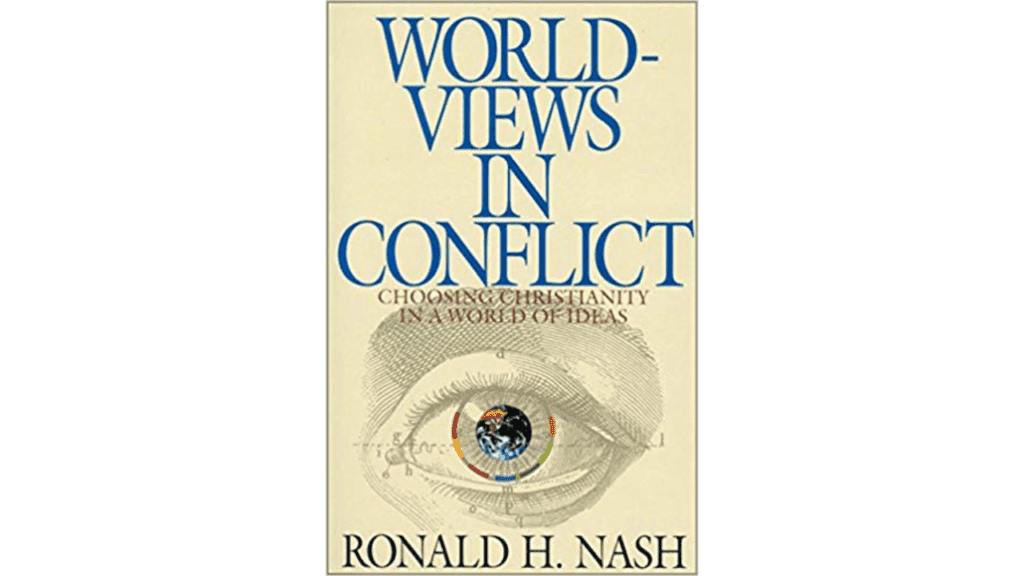In Worldviews in Conflict, Nash attempts to provide the reader with the basic tools needed to make a rational defense of the Christian faith by demonstrating the strength and soundness of a Christian worldview. He does this by addressing some of the more popular arguments against Christianity as well as comparing the Christian worldview to other competing worldviews to show how the former makes more sense of the world.
Nash begins his treatment by defining for the reader exactly what a worldview is, saying, “in its simplest terms, a worldview is a set of beliefs about the most important issues in life” and an important aspect of any worldview is that all of the beliefs espoused by it “must cohere in some way and form a system” (p. 16). He argues for the validity of allowing presuppositions in the development of a worldview and then provides examples of some of the most important questions a worldview must answer if it is to be taken seriously. Next, Nash provides an overview of the Christian worldview and the answers it provides for the aforementioned questions. Confusingly, he explains the Christian worldview before he enters a discussion of how to think about, consider, and choose a worldview using the three tests of reason, experience, and practice. The next three chapters deal first with understanding more intimately the test of reason, and then the applying of that test to the Christian worldview. In the application portion, Nash addresses both the deductive and inductive theodical arguments, showing how they pose no threat to the rationality of Christian theism. He then provides critiques of both Naturalism and the New Age Movement, showing how these two competing worldviews do not provide sufficient or satisfactory results when put to the three tests of reason, experience, and practice. In conclusion, Nash seeks to bolster the Christian worldview by defending the doctrines of the resurrection and the incarnation, before closing by offering the reader some practical advice on how to think through everything presented in the book.
Nash’s stated purpose is to provide the reader with the basic tools needed to interact with others in the world of ideas, “the most important of which is the ability to think in terms of worldviews” (p. 15). In this respect, I believe the author succeeds, but it’s important that the potential reader understand his stated purpose, and not assume a purpose based on what the title of the book may imply. Just by reading the subtitle, choosing Christianity in a world of ideas, one might think that the majority of the book would be devoted to comparing Christianity to “the world of ideas”, however, only Naturalism and the New Age Movement are critiqued. The majority of the work, as the author says, is intended to define, shape, and inform the readers understanding of what a worldview is and how to let that understanding act as a foundation for how one thinks about the world. To that end, the author succeeds, but that also leads me to a point of critique. It seems to me that the author tried to write two different books here, or at least he would have been better off doing so. The first half is devoted to describing the concept of worldviews and how to build an epistemological framework upon them. Given that the author is providing a popular treatment of this subject and not an academic one, I believe this material alone is sufficient to fulfill the authors stated purpose. The problem comes in the second half of the book which is somewhat of an apologetic defense of Christianity over and against Naturalism and the New Age Movement, along with a defense of the incarnation and the resurrection. There are two problems I see with this portion of the book: 1) it appears to be too far removed from the author’s stated purpose of merely providing a general understanding of worldviews, and 2) I do not believe it is a thorough enough treatment in order to provide the reader with the assurance that Christianity is the prevailing worldview amongst a world of ideas—there are only two competing worldviews discussed and only two essential doctrines defended. This is why I feel the author may have been better off separating the two halves of this book, or at least should have considered developing this work into a more exhaustive treatment. The first half of the book would work great as a primer on worldviews and could stand on its own. But the second half is insufficient if taken by itself and it also feels disjointed (or maybe incomplete) following the first half.
That being said, the material itself is great. Although a small bit of effort will need to be put forth by readers who are unacquainted with the topic, Nash deals with philosophical ideas and arguments in a way that is easy to follow and understand if that effort is applied. However, given the problems noted, I would probably hesitate to recommend this book as an introduction to these issues. Nash’s work is certainly worth reading, but in my opinion, it doesn’t provide an adequate foundation for a beginner to start with.

